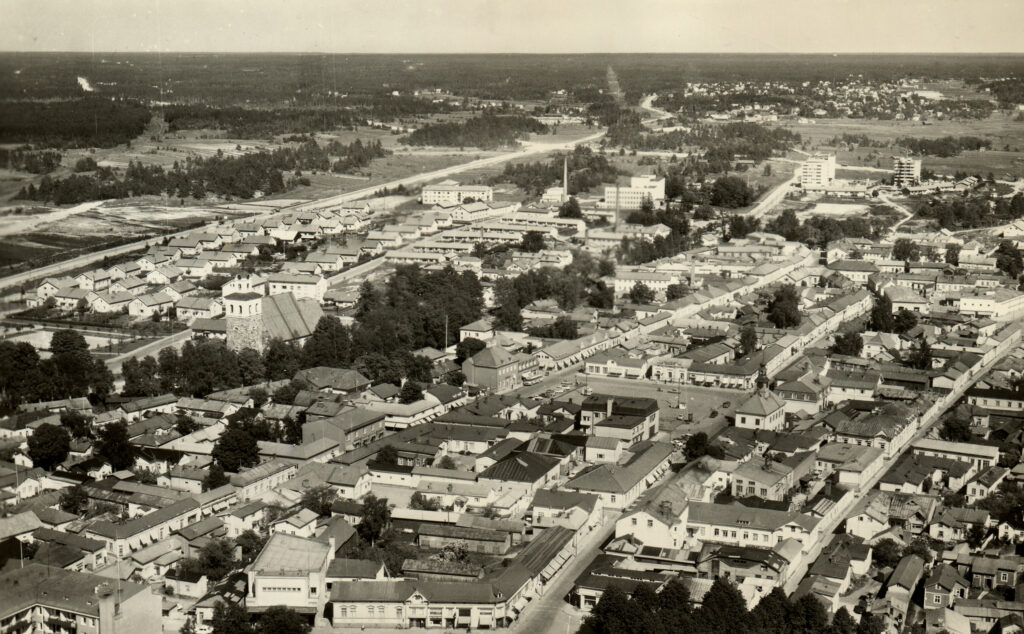Wähä-Suutar

History
In 1756, the property called Wähä-Suutar belonged to Blomstrand. In 1800, plot 226 called Wähä-Suutar and plot 225 called Sorkansipi belonged to the same owner, carpenter Matti Malmsten. He also owned a small field, a barn and a boathouse.
Modification drafts
There is an alteration drawing of the buildings on the plot from 1890. The residential building is on Kiviniemenkatu and is joined to the wing on the northern boundary of the plot on the side of the courtyard. Along the street there is a large hall, a kitchen and two chambers, and a room which, given the width of the building’s frame, is part of the building on the courtyard side. Next to it, on the side of the courtyard, is the baking room, followed by a chamber. The next two chambers are separate apartments, each with its own entrance and a small boarded porch. There are two external doors to the porch and access to both the kitchen and the hall. In the corner of the building there is another small porch with access to the baker’s pantry. The panelling of the building is described as tripartite and the panelling of the four-paned windows as simple but neo-renaissance. On the courtyard side, the window trim is even more modest than on the roof side. The porches have a hipped roof, with diagonal windows. The outbuilding is located on the east side of the property. It has a barn, stables, latrine and two woodworking rooms. The outbuilding has horizontal sheeting. The doors of the stable and the barn, as well as the latrine, have oblique windows. The outbuilding has two storeys and hatches on the doors.
In 1893 a new alteration drawing for the residential building had been made. Johan Andrell, a sailor, asked to be allowed to deviate from the location of the furnaces in the previous plan. In 1890, the furnaces had been marked in the prescribed positions on the ridge of the building. Now they wanted to place some of them in the corners of the rooms, which is apparently where they actually were. The reason given was that having them in the centre of the wall would make it difficult to use the room, as they would take up the best space in the room. The baking oven was to be placed in a different corner of the room than previously suggested. The reason given for this was that the other corner was so dark that it was impossible to see there even during the day without a fire.
Current situation
Residential building
Residential building with long corners, neo-renaissance style 1890, saddle roof
Outbuilding
Clapboarded outbuilding.